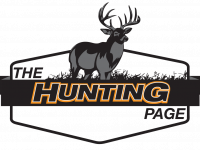Paul Simon recorded “50 Ways to Leave Your Lover” and this may be 51. Just in case you and your significant other are on the outs and you want to end things quickly, this video is for you. Although it takes a bit of getting used to, once you see how seamlessly this mule deer is processed it may motivate you to move your next butcher job indoors- perhaps to the garage if you want to say married. Although this deer is skinned and cut up completely indoors, the process will be exactly the same outdoors, especially if you bag your buck miles from the truck and down a steep slope. If your state allows you to quarter a deer in the field, you an follow this exact process and take it a step further by boning out the meat. My last mule deer was killed a long way from my rig and a friend showed me how easily butchering a deer can be. The same process works for elk and probably moose, yet I’ve never butchered an animal of that size. Notice that the deer is processed on a plastic tarp, a very light and easily packed item for hunting the back country. Aside from keeping dirt and hair from the meat, it also doubles as a ground cloth in bad weather and an emergency shelter. If you don’t have a tarp, use the animal’s hide as a ground cloth. Begin by cutting the hide along the backbone, as shown in the video, and skin the animal toward its hooves, doing your best to keep it clean. Once done, you have the skin side of the hide to work and lay meat on. Additionally, by boning meat from the upper legs you can avoid one of the most difficult aspects of field processing- removing the lower leg segment. Experienced guides and some hunters can cut the knuckle, bend it back and pop it off, yet I never can seem to do that. With this method, skin the hide to the knee joint, remove the meat above the joint and leave the legs attached. This YouTube video, although self filmed, is very informative and one every hunter should see.
Blog Post Title
Blog post excerpt [1-2 lines]. This text is automatically pulled from your existing blog post.

